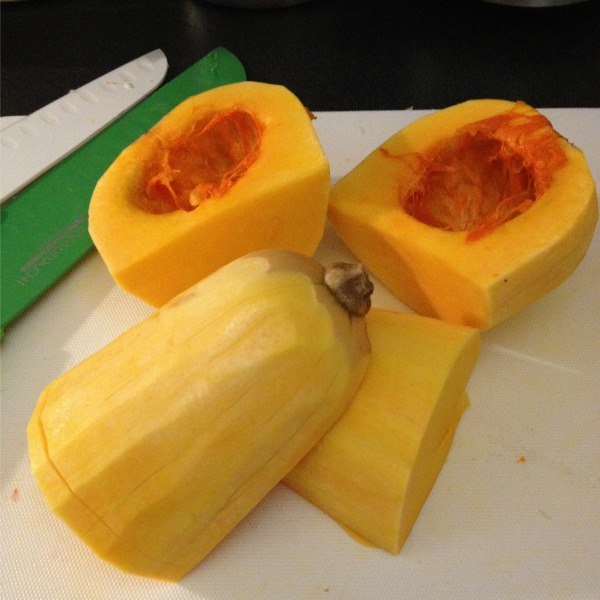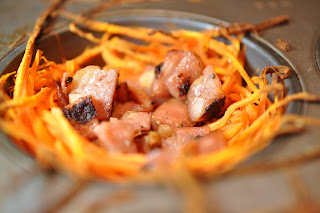By: Maria

Be prepared to have plenty of fire-extinguishing water nearby. This dish has some serious heat - if that frightens you, reduce or even eliminate the peppers; if your taste buds are drooling at the mere thought of the fiery heat, read on!
Ingredients
1 pound extra large shrimp, peeled and deveined
2 heads butter lettuce, rinsed and leaves separated
4 jalapeno peppers
3 cloves garlic, minced
1 Tbs. cumin seeds
1 Tbs. coriander seeds
1/2 cup chopped cilantro, plus more for garnish
4 Tbs. extra-virgin olive oil, plus 1 Tbs.
1 tsp coarse salt
1 tsp freshly ground pepper
1 red bell pepper, diced
1 avocado, diced
1 lime
2 heads butter lettuce, rinsed and leaves separated
4 jalapeno peppers
3 cloves garlic, minced
1 Tbs. cumin seeds
1 Tbs. coriander seeds
1/2 cup chopped cilantro, plus more for garnish
4 Tbs. extra-virgin olive oil, plus 1 Tbs.
1 tsp coarse salt
1 tsp freshly ground pepper
1 red bell pepper, diced
1 avocado, diced
1 lime
Preheat the oven to 400.
In a skillet, toast the cumin and coriander seeds until fragrant (sure, you could omit this step, but be prepared for zzzzz flavors).
On a rimmed baking sheet, toss the peppers with a little oil. Roast for 20 minutes, or until pretty charred on all sides.
Remove from heat and let cool for a few minutes. Chop 'em up.
Dump the toasted cumin seeds, coriander, minced garlic and salt in a food processor and process until finely ground and pasty. Toss in the peppers and pulse until well blended. Add the cilantro and olive oil and pulse once more. (feel the heat, folks!)
Toss the marinade with the shrimp and let sit a few minutes.
Heat skillet over medium-high (adding coconut oil or ghee is an option here). Arrange the shrimp in a single layer and sear 2 minutes. Flip and sear 30 more seconds. Remove from pan and set aside.
Add a little more oil if needed and add the red bell pepper. Saute 2 minutes.
Stuff each lettuce cup with shrimp, red bell pepper and diced avocado. Drizzle with lime and find your fire extinguisher!
Enjoy!
photo courtesy of anniedallie




























